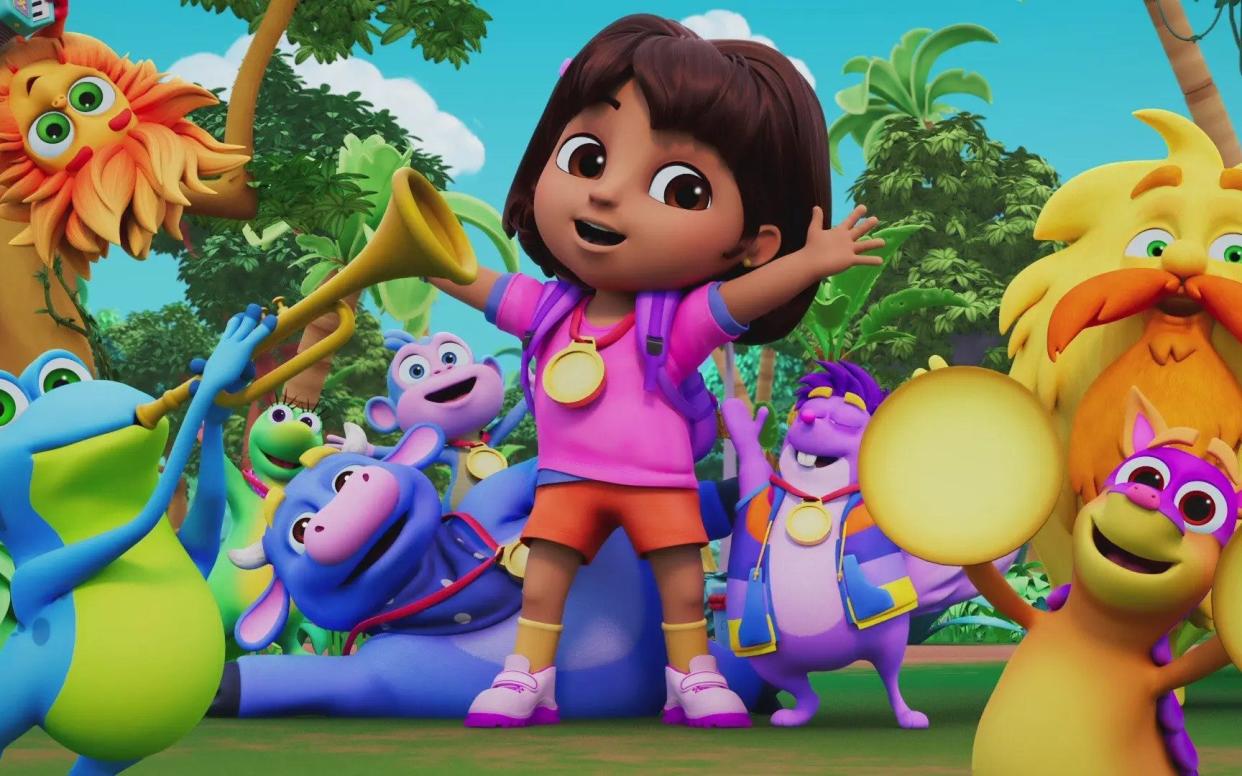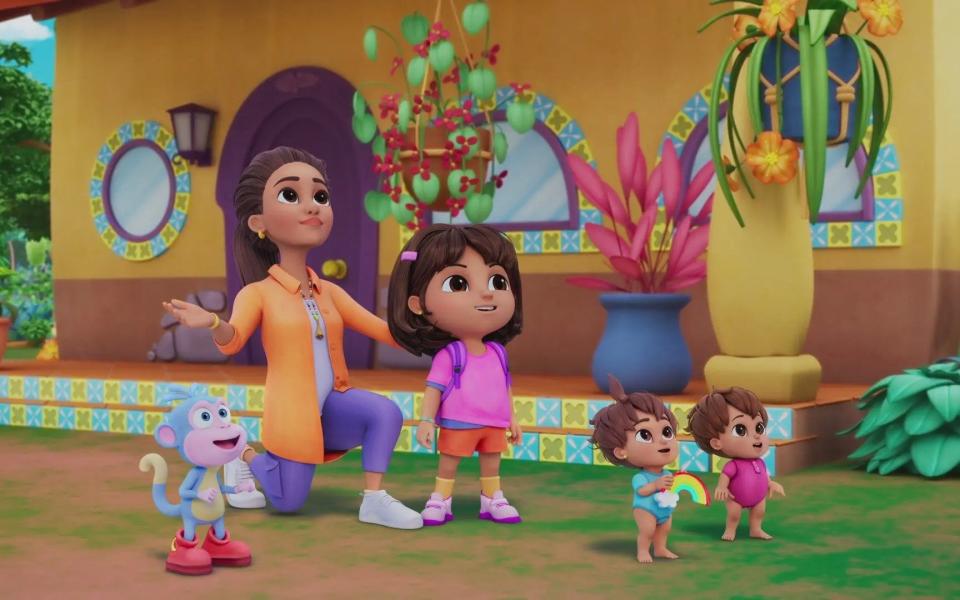Dora the Explorer reboot to explore her Mexican, Cuban and Peruvian ancestry

- Oops!Something went wrong.Please try again later.
An “authentic” reboot of the popular children’s cartoon Dora the Explorer will reveal the beloved character’s Mexican, Cuban and Peruvian ancestry, its producer has said.
The remake of the original show, which ended in 2019, will also use a greater range of Latin music and the Spanish language, relies heavily on a cast of Hispanic voice actors, and delves into Mexican folk art.
Chris Gifford, the series’ executive producer, has said that Dora represented a “bridge builder” in a nod to the row over immigration and border crossings that is dominating US politics.
“She is a friend to all,” he told The New York Times. “Carlos Cortés, who was our cultural content adviser for many, many years, always talked about Dora as a bridge builder. She doesn’t erect barriers, she builds bridges. And that’s still a huge part of her appeal.”
Crossings of the US-Mexican border reached a record level last year and have become a key issue in the early stages of the election battle between Joe Biden, the US president, and Donald Trump, the presumptive Republican nominee.
Mr Biden has attempted to show voters that he has a grip on the crisis with a multi-billion-dollar bill to detain illegal migrants and strengthen the Border Patrol. In turn, Mr Trump has claimed his opponent is responsible for a “border bloodbath”.
While Dora spoke both English and Spanish in her first iteration, the updated programme – called, simply, Dora – places a greater stress on Spanish.
Mr Gifford, who also developed the original series, said: “We thought about her as just the great communicator for preschoolers. And not only a communicator for preschoolers, but a communicator for preschoolers in two languages.”

Dora opens the first of the 26 episodes, which will stream on Paramount Plus, with the words “Hola, soy Dora” (“Hello, I’m Dora”).
Ramsey Naito, the president of Paramount Animation and Nickelodeon Animation, said that 80 per cent of the writers were Latino and could “contribute authentically to the stories”.
Explaining the decision to explore Dora’s Hispanic background, she said: “We’re not living in a world where we can say Latin culture is one thing.”
Diana Zermeño, the 10-year-old Californian who voices Dora, is the daughter of Mexican immigrants.
Kathleen Herles, the original Dora, is of Peruvian heritage and returns to play the seven-year-old’s mother.
One episode focuses on guayabera, a shirt believed to have originated in Cuba, while another examines alebrijes, the carved wooden animals of Mexican folk art.
Dora will also include music by George Noriega and Joel Someillan, two Cuban-American composers, and performances by Taboo, the Black-Eyed Peas rapper, who is Mexican-American and Native American.
Other staples of the original series return unchanged, including Dora’s monkey sidekick, Boots, her talking tools, Backpack and Map, and Swiper, the thieving fox.

